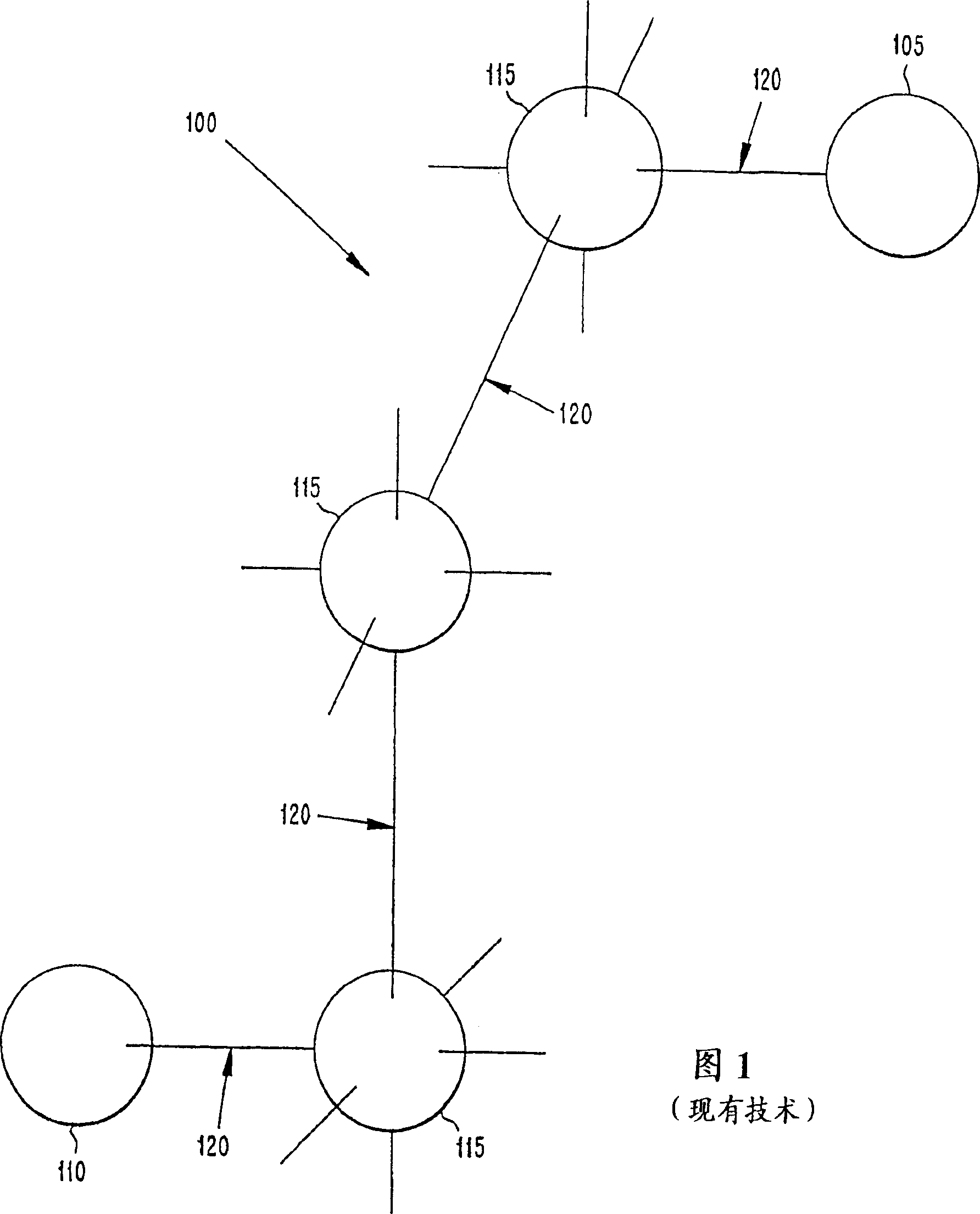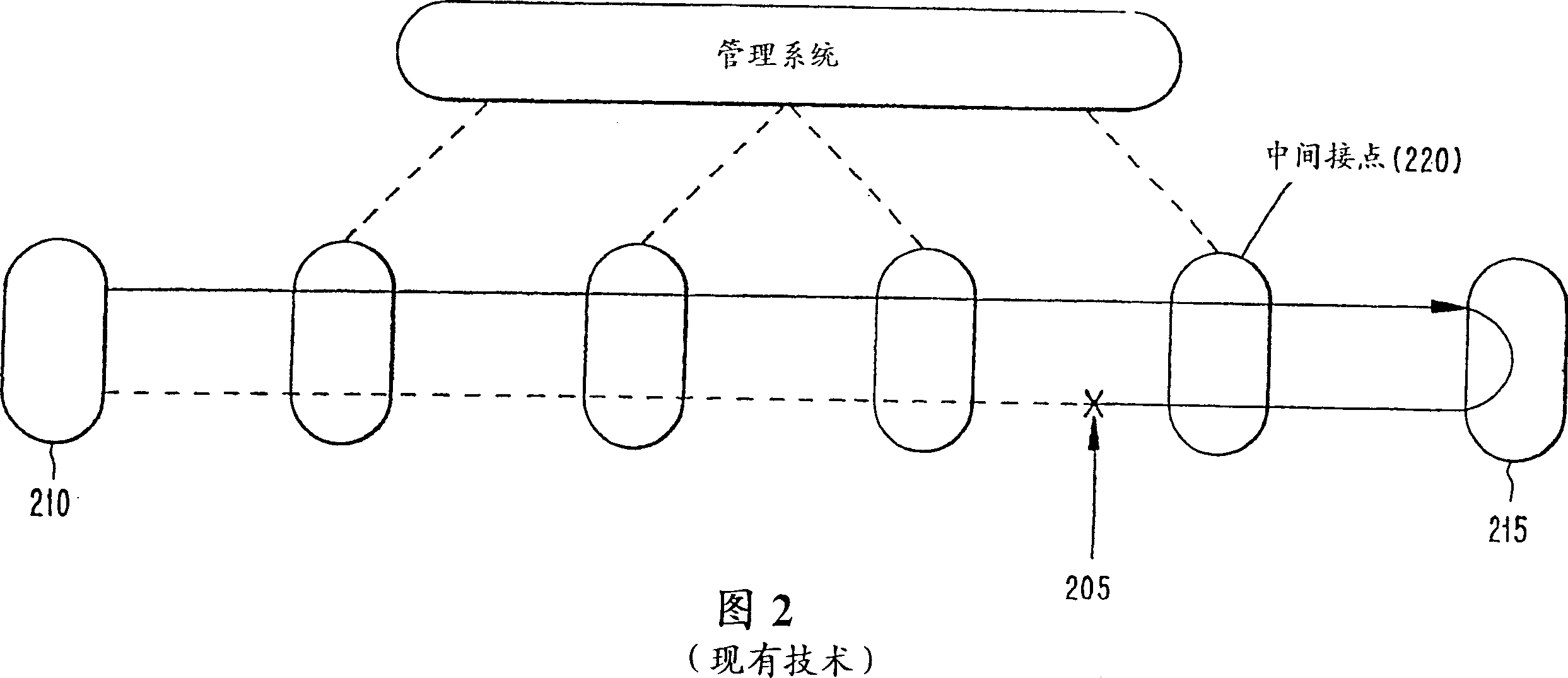Method and apparatus for detecting and locating failure in telecommunication network
A telecommunications network and fault technology, applied in the field of data transmission, can solve problems such as inability to accurately locate interrupted connections, inability to accurately locate, and complex ATM loopback procedures
- Summary
- Abstract
- Description
- Claims
- Application Information
AI Technical Summary
Problems solved by technology
Method used
Image
Examples
Embodiment Construction
[0063] The present invention identifies and locates disconnected connections at or between switching nodes in a telecommunications connection. Although the following discussion describing the present invention focuses on facilities using Asynchronous Transfer Mode Adaptation Layer 2 (AAL2), those skilled in the art will recognize that the present invention can be implemented using Asynchronous Transfer Mode (ATM) layers, or other The well-known ATM adaptation layer in the art is applied.
[0064] FIG. 1 shows an AAL2 connection 100 between a source node 105 and a destination node 110 . AAL2 connection 100 includes three intermediate nodes 115 between source node 105 and destination node 110 . The purpose of the intermediate node 115 is to perform packet switching functions for routing AAL2 data. Furthermore, AAL2 connection 100 includes a plurality of concatenated AAL2 channels 120, where each AAL2 channel 120 forms part of an AAL2 link between adjacent nodes. Although diff...
PUM
 Login to View More
Login to View More Abstract
Description
Claims
Application Information
 Login to View More
Login to View More - R&D
- Intellectual Property
- Life Sciences
- Materials
- Tech Scout
- Unparalleled Data Quality
- Higher Quality Content
- 60% Fewer Hallucinations
Browse by: Latest US Patents, China's latest patents, Technical Efficacy Thesaurus, Application Domain, Technology Topic, Popular Technical Reports.
© 2025 PatSnap. All rights reserved.Legal|Privacy policy|Modern Slavery Act Transparency Statement|Sitemap|About US| Contact US: help@patsnap.com



